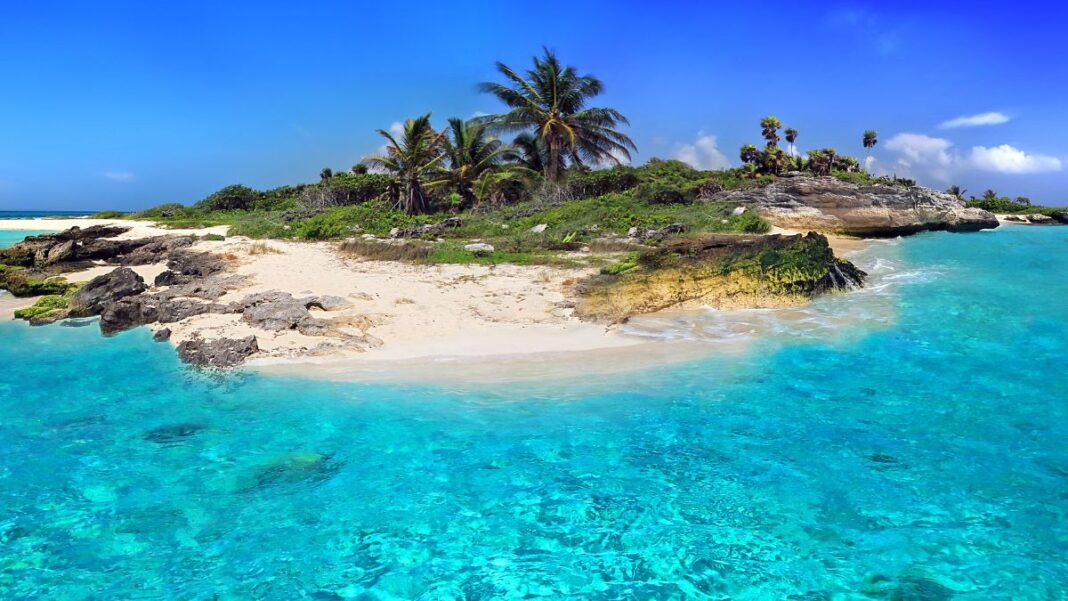If you’re planning a trip to the Caribbean, it’s important to understand the general climate patterns of the region. The Caribbean is a tropical region, which means that temperatures are generally warm to hot year-round. The region also experiences one or two distinct wet seasons per year, which can coincide with the Atlantic hurricane season from June 1st to November 30th.
The climate in the Caribbean can vary depending on the specific island or region you’re visiting. For example, Aruba has a hot and tropical climate with little rainfall, while other islands may experience more frequent rain showers. It’s important to research the specific climate patterns of the island or region you plan to visit in order to pack appropriately and plan your activities accordingly.
Overall, understanding the general climate patterns of the Caribbean can help you plan a more enjoyable and comfortable trip. Whether you’re looking to soak up the sun on a beach or explore the local culture and cuisine, knowing what to expect in terms of temperature and rainfall can make a big difference in your overall experience.
Climatic Zones of the Caribbean
The Caribbean region is known for its warm and humid climate. The climate is tropical, and the region is located within the tropics, which is why the temperature is warm throughout the year. However, there are different climatic zones within the region that are determined by the amount of rainfall and the seasons.
The Tropical Rainforest Climate
The tropical rainforest climate is characterized by high rainfall throughout the year. The temperature is also warm, with an average temperature of around 27°C. The rainforest climate is found in areas that receive more than 2,500 mm of rainfall per year. These areas are mainly located in the eastern part of the Caribbean, including Dominica, Martinique, and Saint Lucia.
The Tropical Monsoon Climate
The tropical monsoon climate is characterized by a distinct wet and dry season. The wet season usually runs from May to November, while the dry season runs from December to April. The temperature is also warm, with an average temperature of around 27°C. The monsoon climate is found in areas that receive between 1,500 mm and 2,500 mm of rainfall per year. These areas are mainly located in the central and southern parts of the Caribbean, including Barbados, Grenada, and Trinidad and Tobago.
The Tropical Savanna Climate
The tropical savanna climate is characterized by a distinct wet and dry season. The wet season usually runs from May to November, while the dry season runs from December to April. The temperature is also warm, with an average temperature of around 27°C. The savanna climate is found in areas that receive between 1,000 mm and 1,500 mm of rainfall per year. These areas are mainly located in the western part of the Caribbean, including Cuba, Jamaica, and the Dominican Republic.
Understanding the different climatic zones of the Caribbean is important for travelers and residents alike. It helps to know what to expect in terms of weather conditions and what activities are available in each area. Whether you are looking for a tropical rainforest adventure or a relaxing beach vacation, the Caribbean has something for everyone.
Influencing Factors on Caribbean Climate
The climate of the Caribbean is influenced by a number of factors, including trade winds and ocean currents, hurricanes and tropical storms, and topography and elevation. Understanding these factors is essential to understanding the general climate patterns across the Caribbean region.
Trade Winds and Ocean Currents
The trade winds and ocean currents play a significant role in the climate of the Caribbean. The trade winds blow from the east and northeast, and they bring cool, dry air to the region. This air is responsible for the relatively low humidity and pleasant temperatures that are characteristic of the Caribbean.
The ocean currents, on the other hand, help to regulate the temperature of the water in the Caribbean. The warm waters of the Caribbean are kept in check by the cool waters of the Atlantic, which flow into the region through the Gulf of Mexico and the Caribbean Sea.
Hurricanes and Tropical Storms
The Caribbean is known for its hurricanes and tropical storms, which can have a devastating impact on the region. These storms are formed by warm ocean waters and the trade winds, and they can cause significant damage to homes, businesses, and infrastructure.
The hurricane season in the Caribbean runs from June to November, with the peak season occurring in September. During this time, it is important to monitor weather reports and take appropriate precautions to protect yourself and your property.
Topography and Elevation
The topography and elevation of the Caribbean also play a role in the region’s climate. The islands of the Caribbean are generally mountainous, with some of the highest peaks in the region reaching over 10,000 feet.
The mountains help to create a variety of microclimates across the region, with cooler temperatures and higher rainfall in the higher elevations. This can have a significant impact on agriculture and other industries that rely on the climate of the region.
Overall, understanding the influencing factors on Caribbean climate is essential to understanding the climate patterns of the region. By taking these factors into account, you can better prepare for the unique challenges and opportunities that come with living in the Caribbean.
Frequently Asked Questions
What are the defining characteristics of the Caribbean climate?
The Caribbean climate is tropical and generally warm throughout the year. The region experiences two distinct seasons: a wet season and a dry season. The wet season generally coincides with the Atlantic hurricane season, officially running from June 1st till November 30th of each year. The Caribbean climate is also characterized by high humidity and abundant sunshine.
How do weather patterns vary across the Caribbean region?
Weather patterns across the Caribbean region vary significantly. The eastern Caribbean islands, such as Barbados and Saint Lucia, tend to be drier than the western islands, such as Jamaica and Cuba. The northern Caribbean islands, such as the Bahamas and Turks and Caicos, experience cooler temperatures than the southern islands, such as Trinidad and Tobago.
What impacts does climate change have on the Caribbean?
Climate change has significant impacts on the Caribbean region. The region is particularly vulnerable to sea-level rise, increased frequency of extreme weather events, such as hurricanes and tropical storms, increased rainfall and flooding, dangerous high temperatures, and coastal erosion.
Which natural disasters are most common in the Caribbean islands?
The Caribbean islands are prone to a range of natural disasters, including hurricanes, earthquakes, and volcanic eruptions. Hurricanes are the most common natural disaster in the region, with the hurricane season running from June to November.
How do the climate patterns of the Caribbean differ from those of Central America?
The climate patterns of the Caribbean and Central America differ significantly. Central America is characterized by a tropical climate with distinct wet and dry seasons. The Caribbean, on the other hand, has a more consistent climate with two distinct seasons.
What are the typical temperature ranges in the Caribbean throughout the year?
The temperature range in the Caribbean throughout the year varies depending on the island and the season. In general, temperatures range from the low 70s to the high 80s Fahrenheit, with cooler temperatures in the winter months and warmer temperatures in the summer months.

